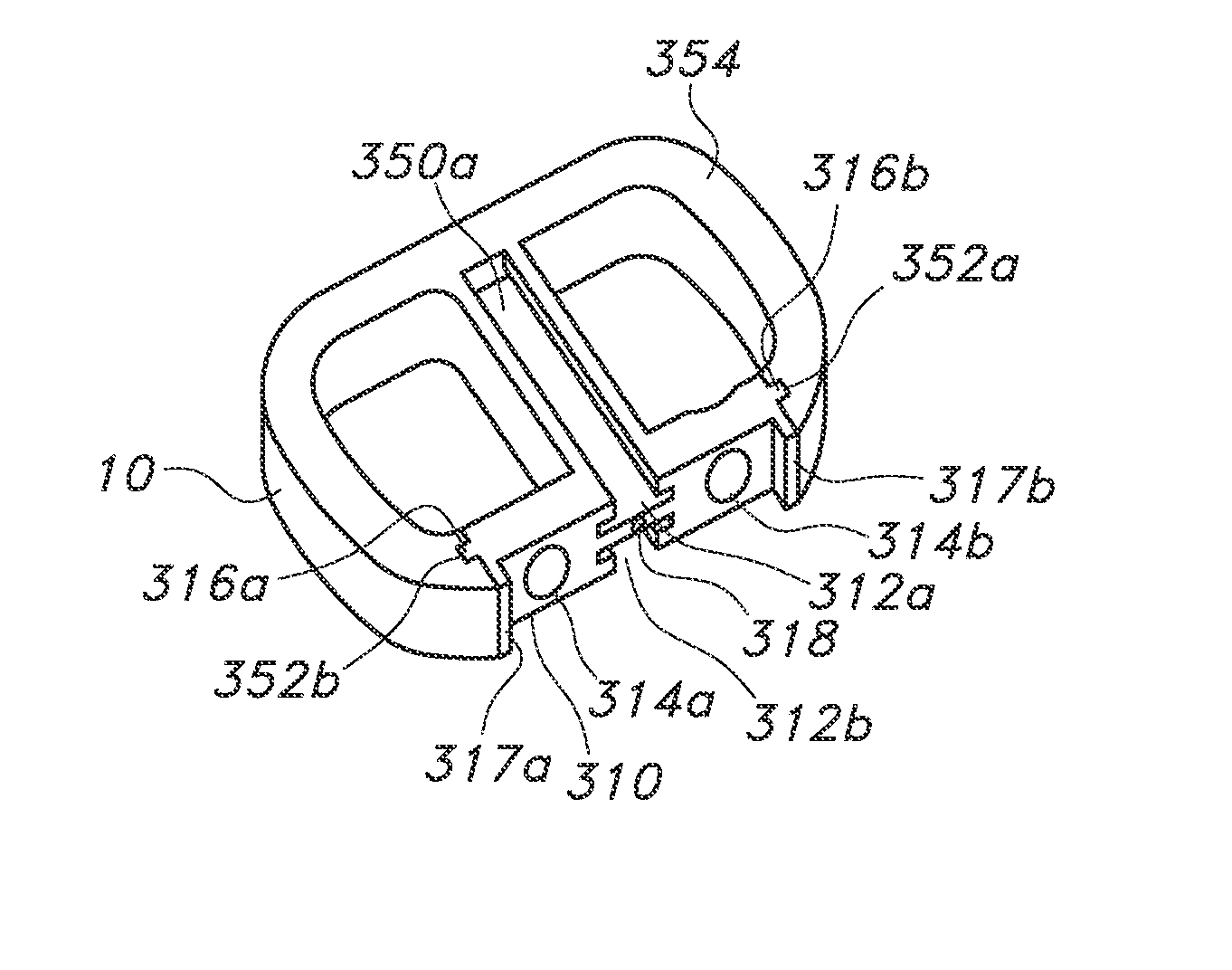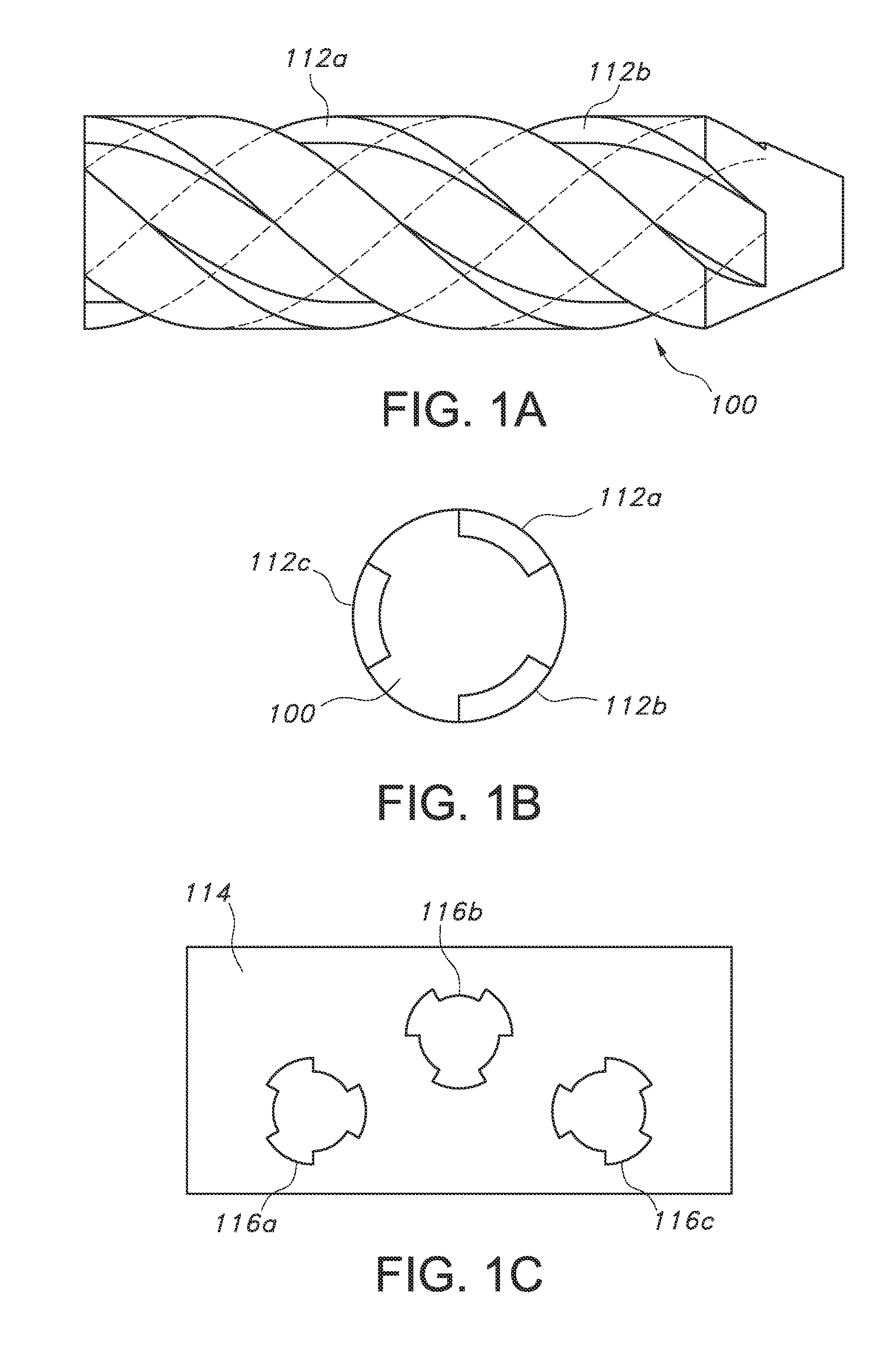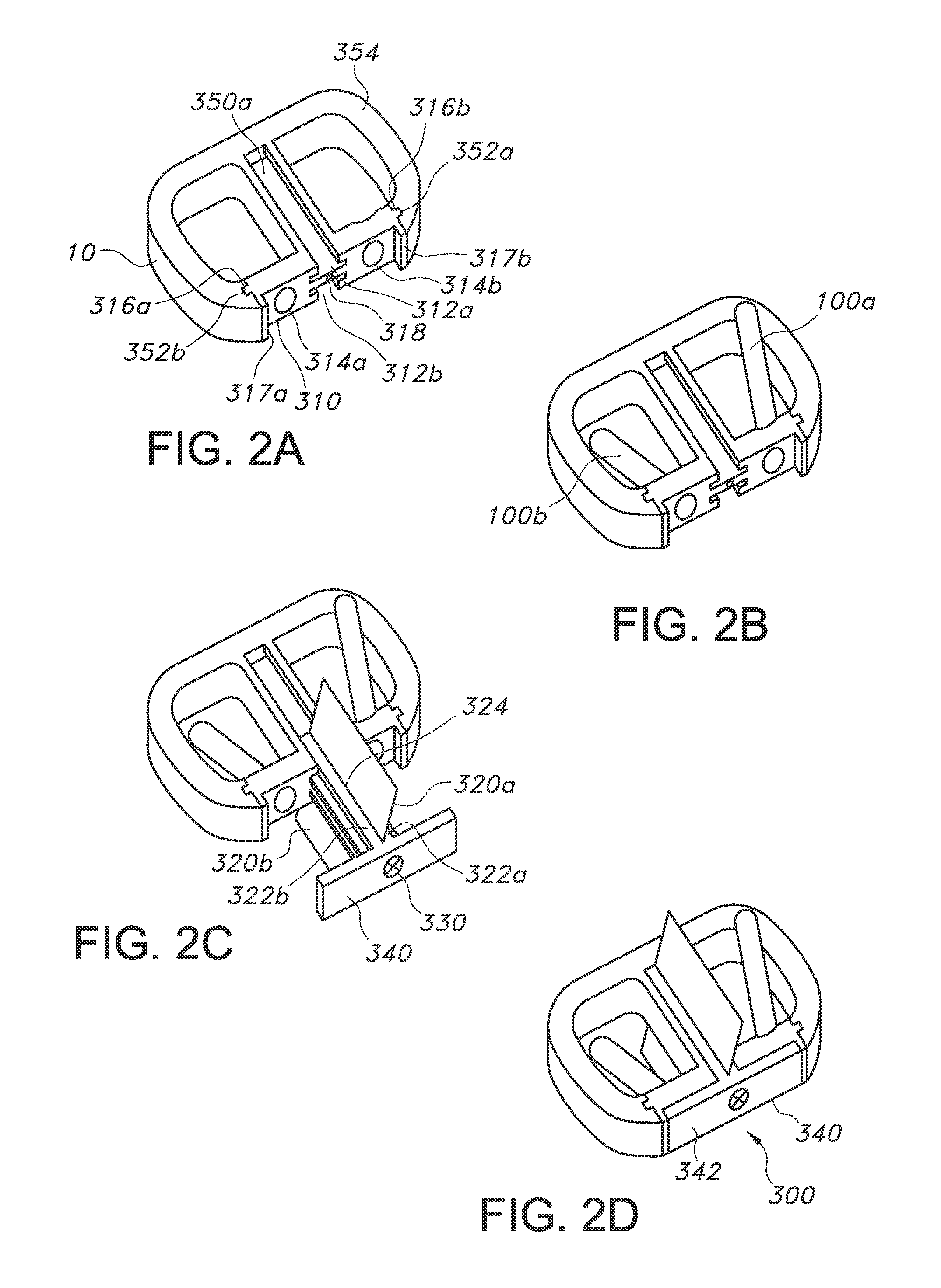Fixation Devices for Anterior Lumbar or Cervical Interbody Fusion
a technology of fixation device and cervical interbody, which is applied in the field of spine surgery, can solve the problems of prolonging recovery, destabilizing the implanted cage, and reducing the risk of neurologic injury
- Summary
- Abstract
- Description
- Claims
- Application Information
AI Technical Summary
Benefits of technology
Problems solved by technology
Method used
Image
Examples
Embodiment Construction
I. Fixation Systems
[0034]The fixation systems described herein fix an intervertebral cage in its desired location, to resist left to right rotation and to resist flexion and / or extension of the cage. Additionally, the fixation elements are locked in place to prevent accidental removal from the cage. When assembled, the implant is contained within the excised disc space and does not protrude past the anterior wall of the vertebral body. Thus the system has a zero anterior profile. Additionally, preparations of anterior surface of the vertebral body are minimized because the implant does not lie against this surface.
[0035]In some embodiments, the fixation system is preassembled. When the front plate and cage are preassembled, the plate is automatically aligned upon implant insertion. This simplifies the insertion process, preventing the need to align and realign the front plate.
[0036]The systems can be used for anterior, posterior or lateral approaches. The devices can be single-use o...
PUM
 Login to View More
Login to View More Abstract
Description
Claims
Application Information
 Login to View More
Login to View More - R&D
- Intellectual Property
- Life Sciences
- Materials
- Tech Scout
- Unparalleled Data Quality
- Higher Quality Content
- 60% Fewer Hallucinations
Browse by: Latest US Patents, China's latest patents, Technical Efficacy Thesaurus, Application Domain, Technology Topic, Popular Technical Reports.
© 2025 PatSnap. All rights reserved.Legal|Privacy policy|Modern Slavery Act Transparency Statement|Sitemap|About US| Contact US: help@patsnap.com



